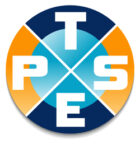
Products
PTES offers a broad range of materials testing equipment and accessories for a wide variety of applications and industries.
Services
PTES offers a full range of calibration and verification services to nationally recognized standards from the ASTM, NIST and more.
Consulting
PTES provides comprehensive on site evaluations of testing procedures, process analysis, equipment recommendations, training and other services.
Have any questions?
Contact PTES and let us help you schedule a verification, purchase materials testing equipment, or schedule a consultation today.
